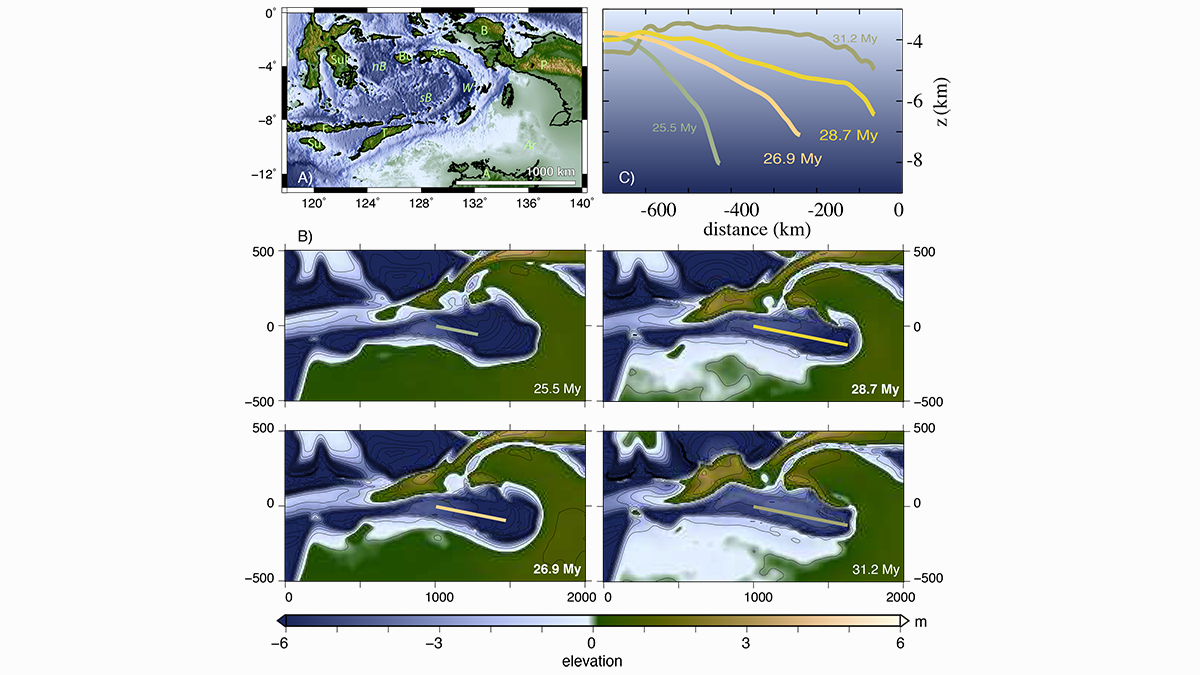Editors’ Highlights are summaries of recent papers by AGU’s journal editors.
Source: Geochemistry, Geophysics, Geosystems
At the eastern end of the Tethys realm, southeast Asia displays an unrivaled collection of morphotectonic oddities. The Sunda and Sahul shelves are the largest flooded continental shelves and subside at a few tenths of a millimeter per year, while the adjacent Wallacea uplifts at the same rate. Additionally, the Weber basin, in the Banda embayment, is the deepest place on Earth, besides subduction trenches.
By tying 3-D “Earth-like” models that couple mantle and crustal dynamics to the geological record, Husson et al. [2022] reveal how the docking of the Australian continent onto the subduction zone have triggered a paroxysmal set of morphotectonic adjustments over the underlying transient mantle flow.
This study strengthens the concept that the different layers of the Earth, previously considered independent, are strictly linked to each other. Additionally, unraveling the surface tectonic morphological evolution of specific region requires an understanding of the function of the deep mantle dynamics.
Citation: Husson, L., Riel, N., Aribowo, S., Authemayou, C., de Gelder, G., Kaus, B. J. P., et al. (2022). Slow geodynamics and fast morphotectonics in the far East Tethys. Geochemistry, Geophysics, Geosystems, 23, e2021GC010167. https://doi.org/10.1029/2021GC010167
—Claudio Faccenna, Editor in Chief, Geochemistry, Geophysics, Geosystems

